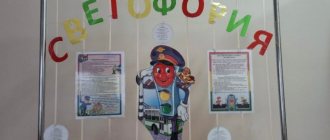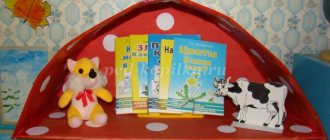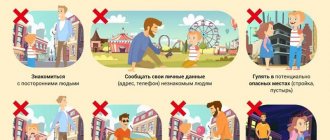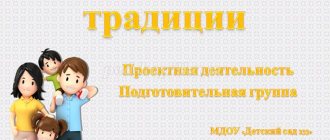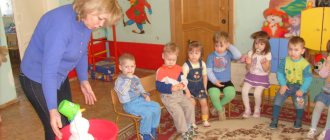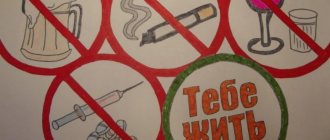How to make a corner of privacy with your own hands
The Federal State Educational Standards standards impose certain requirements on the corner of solitude:
Note! In the corner of privacy, you can make a window that allows you to periodically observe the child to make sure he is safe and well. However, it should not violate the baby’s personal space.
Ideas for decorating a corner
When creating the design of a corner of solitude, the teacher should focus on the age of his charges. For the younger group of preschool educational institutions, it is relevant to design a space with a low, narrow entrance. The child will feel comfortable and safe in such an environment.
For other age groups, larger spaces such as a tent or house are suitable, the entrance to which can be curtained with a piece of fabric or covered with a screen. Instead of toys, in such an area you can place items exclusively for educational games or other activities:
Soft toys will come in handy
There can be several options for creating frames for tents:
How to help children make friends with their emotions. "Traffic Light" technique
Main
The green mother taught the green crocodile: “You can be a scientist, a designer or a poet, the main thing is to be green!” Please remember this!
The pot-bellied hippo was taught by the pot-bellied mother: “You can become an acrobat, a designer or a poet, the main thing is to be pot-bellied.” Happiness, son, lies in this!
And the gray mouse mother taught Little Mouse quietly: “You can be an engineer, a scientist or a poet, the main thing is to be gray, small and inconspicuous!”
(Usachev)
And my mother taught me. The main thing is emotions. Fill your life with them. Follow your emotions. Trust them. Emotions are everything!!!)))
And I learned these lessons.
Imagine my surprise when I read in N.I.’s book. Kozlov that I am not my emotions... that you can learn to manage emotions...
And as it turned out, this is true! )))
Years have passed since then. I have matured, I am friends with my emotions, I am guided by common sense. I work as a teacher in an elementary school and share useful, sensible things with children and adults.
Three years ago I recruited a new class of six-year-olds. Working with them became a real test and professional challenge.
The children behaved very emotionally, cried, screamed, threw textbooks and pencil cases, reacted disproportionately to the situation, and endlessly conflicted.
Of course, it was possible to indulge in emotions with them. But I decided to act rather than react.
And so I teach children: you can become a scientist, designer or poet, the main thing is to use your brains;) Please remember this!
And I have good results.
For example, to solve situations with emotional storms, I adapted the wonderful Distance technique “Traffic Light of Emotions” for individual work with children and for working with the whole class.
The break was coming to an end. An enraged Sashka burst into the classroom. Red. Choking. Screams.
I honestly listen carefully to what he is trying to tell me, and because of his overwhelming emotions I cannot understand anything.
It turned out that the four boys went to the toilet. Afterwards we washed our hands. And since there was nothing to wipe their hands with, they shook the water from their hands into the sink. The splashes hit Sasha and Nikita. Accidentally. Nikita laughed, wiped off the splashes and moved on. And Sasha “exploded.” The boys who sprayed apologized. But Sasha continued to seethe and had no intention of stopping - he didn’t want to, couldn’t, didn’t know other options... ???
That’s when I remembered the “Traffic Light” technique, which I successfully use for myself. She took out a picture of a traffic light from the table and hung it on the board, took out clothespins, handed them out to the children and said the following introductory word:
– A traffic light is a metaphor for our communication:
- Green: minor troubles. If there is an intersection ahead with a green traffic light, drivers usually still slow down, at least just in case, but the car does not stop. It's unpleasant, but it's not the end of life!
- Yellow: medium trouble. When the color turns yellow, the driver slows down and makes a decision: drive or stop. These are troubles that really hinder you, but you are able to cope with them and overcome them.
- Red: major troubles. The driver stops at a red traffic light. These are very serious and real problems. You can even say “the end of the world” about them.
Now, with the help of the Traffic Light, we all, and I together with you, will assess the situation that happened to Sasha and Nikita. Attach a clothespin to the traffic light circle that corresponds to the situation we are analyzing and justify your choice.
I gave Sasha the opportunity to do this first.
Sasha, very indignant, came to the board snorting, looked displeased at those who sprayed him, simply witheringly looked at him, looking for support with my eyes. I was friendly, but kept neutrality.
Sasha said categorically: Of course, this is horror and the end of the world!!! - and attached a clothespin to the red one.
After him, all the guys in the class came out one by one, expressed their opinion, gave reasons for it, and everyone, as one, attached a clothespin to the green one. And even Nikita, who was also sprayed. And I attached my clothespin to the green one. She looked kindly and questioningly at Sasha, at the Traffic Light with clothespins, and again at Sasha, inviting her to evaluate the resulting picture.
Then I reminded Sasha: Do you remember the unfortunate tragic incident when a girl from our school was hit by a car? What kind of traffic light circle do you think this situation is?
Pause.
And the situation – “they accidentally sprayed me with water”... – I balanced it with my palms, like scales.
Sasha froze.
After a pause, he said that he wanted to change his clothespin to yellow. When he reached the traffic light, he even moved the clothespin to green.
I asked why Sasha changed his mind?
Sasha said that he heard the guys, saw a traffic light with clothespins, remembered the girl who was hit by a car, thought and understood everything.
Of course, I clarified that Sasha understood “everything”. And I heard quite rational thoughts. And the main conclusion: “It wasn’t worth it. All this is nonsense. Next time I'll do it like Nikita. And in general, you need to think.”
This practice became a lesson not only for Sasha, but also for the guys in the whole class. I asked each student in the class what they personally learned from this situation.
The guys in my class really loved this technique. If they can’t cope with the situation themselves, they run to me for help and ask me to make a traffic light.
Since it is in demand among us (for now), it is constantly hanging in a visible place.
Of course, the problem of emotionality has not yet been completely resolved, but the seed of reason has been planted. And this gives hope. Water wears away stones.
In my work, I often encounter the fact that when a child finds himself in any even slightly unusual situation, he incorrectly assesses its significance, and as a result, an emotional storm and conflict arises, which the children themselves are not able to resolve and suffer from it.
Sprayed with water in the toilet!!! Those walking behind stepped on their heels while walking to the dining room!!! In a large crowd of children they hooked each other!!! And many other seemingly insignificant situations, but causing the reaction “Horror!!!”, “End of the world!!!”.
Often the point is that the child cannot understand: is this a trifle or not? Just unlucky? Or, really, “Wow!!!”? Or maybe just “horror”? Or maybe it’s still “nonsense”? Children do not have a suitable behavioral model in their experience.
The magnitude of what happened is easier to determine by comparison.
The child needs to be taught to determine the real magnitude of what happened and react accordingly.
For teachers, parents, psychologists - anyone who is faced with the problem of children’s inability to rationally assess a situation, take control of emotions, and choose the optimal way to respond, I recommend the Traffic Light technique. It helps children learn to be friends with their emotions and use common sense.
Corner of psychological relief
| The problem of preserving and strengthening the psychological health of preschool children is obvious. We live in an era of crises and social change. The economic and value instability of society has a negative impact on our preschoolers. This is confirmed by children with disorders of psycho-emotional development, who express emotions of anger with aggression, who do not know how to negotiate, who have difficulty adapting to life in a children’s group, who do not respect their friend, his feelings, mood and emotions. Based on the above, the problem of preserving not only the physical, but also the psychological health of preschool children and the formation of their emotional well-being is of particular importance. It is very important to teach preschoolers to accept themselves as they really are - a sign of mental health and an indicator of personal growth. After all, self-acceptance largely determines the nature of interaction with other people. To solve this problem, it is necessary to create appropriate conditions and organize the subject environment. For this purpose, our group created a “Psychological Relief Corner”. |
Goal : direct – unity, creation of warmth and comfort, an emotionally comfortable environment.
Indirect is a place for play.
Of particular interest is comfort.
Safety – transparent material, soft pillows, toys.
A corner of solitude will help you calm down, relax, “hide” from the hustle and bustle, “call mom,” play quiet games and favorite toys, look at a family album, interesting books, sitting on a lot of pillows.
There is a corner in our group
He's not low, he's not high
The kids are resting there
They lift the mood.
Pleasant music and a glowing lamp calm and relax.
Box - myrilka . The children join hands inside it and say the words of the peace song:
Make up, make up and don't fight anymore.
These are beautiful balls
Multi-colored skeins
Let's just take them in our hands
And we’ll start rolling soon.
Reconciliation pillow in the shape of a candy . Taking the “candy” in their hands, the children smile and say kind, affectionate words to each other.
Scream cups . Help relieve tension.
Rug of anger. The child takes off his shoes and wipes his feet on it until his mood improves.
To increase the self-esteem of anxious, insecure children - medals.
Mood board . On it, the child can choose a magnet that matches his
Toys, pillows filled with cereal. You can rub them with your hands and calm down.
"Bags of Moods" If a child is in a bad mood, he can put it in a “sad” bag, and “take” a good mood from a “cheerful” bag.
Magic items: hats, cloak, magic wand, magic slippers. They will help your child make a wonderful journey and turn into a fairy-tale hero by doing good deeds.
"Dry pool" of beans. Helps children relieve psychological stress.
"Twister". A game for teaching children cooperation and coordinated teamwork.
Middle group teachers: Ionina N.N., Cherepanova L.A.
